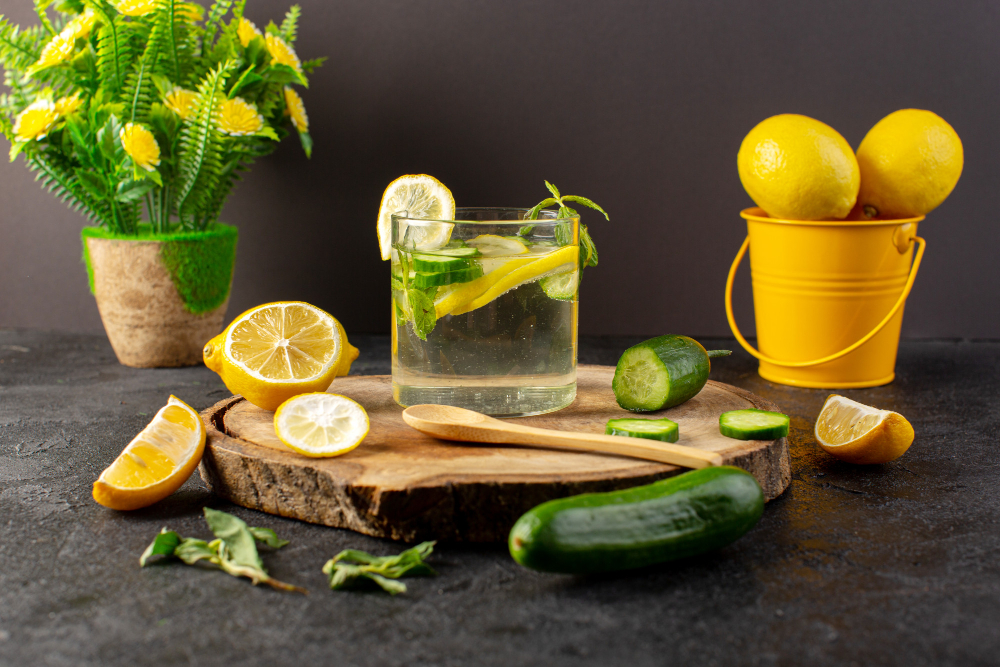
When it comes to skin health, foods high in healthy fats, vitamins, and a few other compounds can help keep you glowing. So what are these compounds and what foods are the best sources? Let’s take a look.
Factors that Negatively Affect Your Skin
In short, having a healthy skin appearance is highly dependent on moisture and your body’s ability to produce collagen. Here are a few things that can negatively affect your skin health and appearance.
Diet - A poor diet full of processed and ultra-processed foods can lead to inflammation which can negatively impact your skin.
Oxidative stress - this imbalance of oxidants leads to many of the conditions we associate with aging including damage to collagen and disruption to the skin’s moisture barrier.
Dryness - Overall dehydration, harsh soaps, and dry weather can all contribute to dry, damaged skin.
Lack of sleep - Not getting enough sleep can lead to an increase in cortisol which can lead to breakouts.
Exposure to pollutants - dust, pollutants and fine particles and clog your pores.
Specific Skin Conditions - There are a number of skin conditions that can impact its appearance. Cleveland Clinic provides some more detailed information here.
Foods and Drinks for a Glowing Complexion
Hydrating and Refreshing
Water
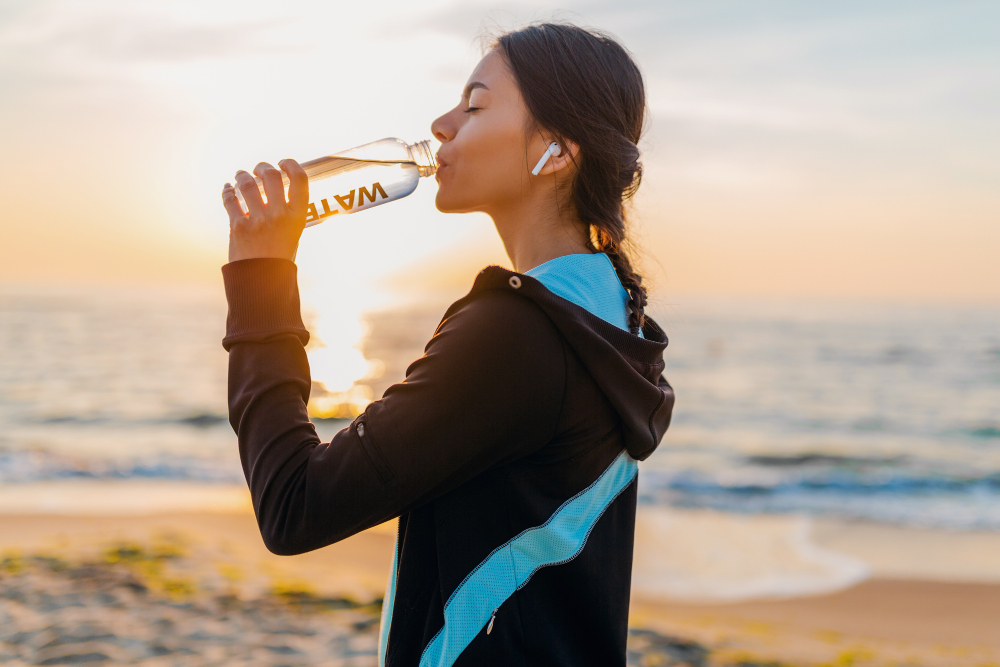
Skin health and appearance is mostly a matter of moisture so keeping a nice complexion requires getting your ideal water intake. While eight cups has been heavily emphasized, it’s a little more complicated because of factors like body mass, activity level and the level of humidity where you live. Don’t forget that you can get plenty of water from fruits like watermelons, tomatoes and cucumbers.
Cucumbers
Have you ever seen those fancy spa treatments where people have cucumbers on their eyes and wonder what that is all about? The reason is that cucumbers have a mild astringent quality that can reduce puffiness when applied to the skin.
But eating them is great too! Cucumbers provide ample hydration (they’re 96% water) and provide several compounds that aid in collagen production such as folic acid, caffeic acid and Vitamin C.
Foods Rich in Omega-3
Fatty Fish
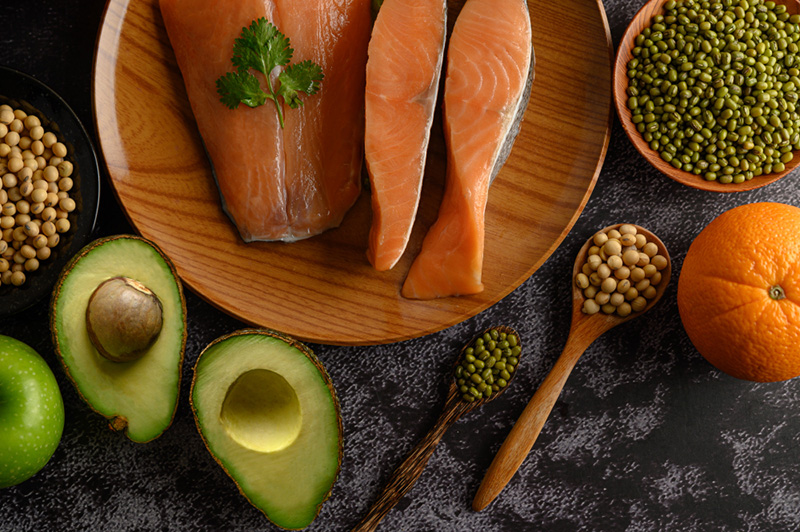
Fatty fish like salmon, trout, mackerel, sea bass are excellent sources of Omega-3 which is important for keeping your skin supple. In fact, one of the major symptoms of an Omega-3 deficiency is dry skin.
The Omega-3 and Vitamin E content in fatty fish also might also help to prevent skin-damaging inflammation.
Lastly, fatty fish provides zinc which aids in skin cell production and skin repair.
Avocados
Avocados provide another healthy fat known as monounsaturated fats which are beneficial to your body in a number of ways including aiding in maintaining elastic, supple skin.
They’re also a great source of Vitamin E and Vitamin C which combat inflammation and aid in collagen production respectively. Each ½ of an avocado contains 1.3 mg of Vitamin E (50% of your daily value) and 6 mg Vitamin C (14% of your daily value).
Initial evidence suggests they might even contain compounds that protect your body from skin-damaging UV rays.
Walnuts
Walnuts provide a few skin health benefits but a distinct one is providing a balanced amount of Omega-3 and Omega-6 fatty acids.
Western diets can often be too high in Omega-6 which can come with certain health risks but the ratio in walnuts can help to balance Omega-6 levels.
Walnuts also provide 8% of your daily zinc requirements per serving.
Flaxseeds
Another excellent source of plant-based Omega-3 is flaxseeds with 6.38 grams of ALA in every 28-gram portion. In a small-scale study of 13 women who took flaxseed oil for 12 weeks, participants showed improved smoothness and hydration.
The Mayo Clinic also cites them as having some ability in lowering bad cholesterol.
You can eat flax seeds plain, sprinkle them on a salad or use flaxseed oil in sauces and dressings.
Vitamin C-Rich Fruits and Vegetables
Kiwis
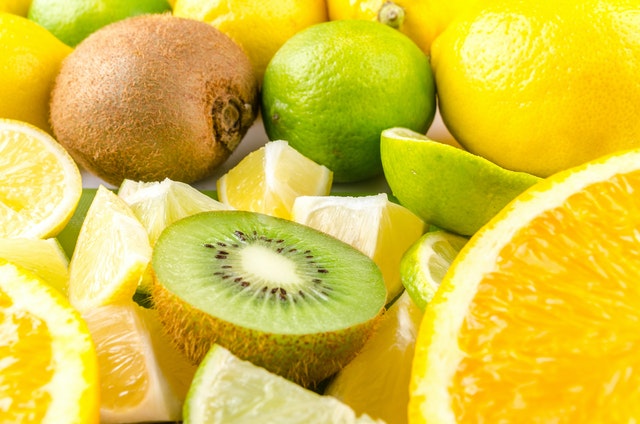
The kiwi fruit is surprising in a number of ways including being named after a bird. Another surprising fact is that Kiwis provide more Vitamin C than oranges by volume. Each fruit has 64 mg of Vitamin C, about 71% of your daily recommended intake. This is important because Vitamin C is needed for collagen production.
Try to wait until the fruits are ripe before eating. That’s when they’ll taste the best and have the most Vitamin C.
Strawberries
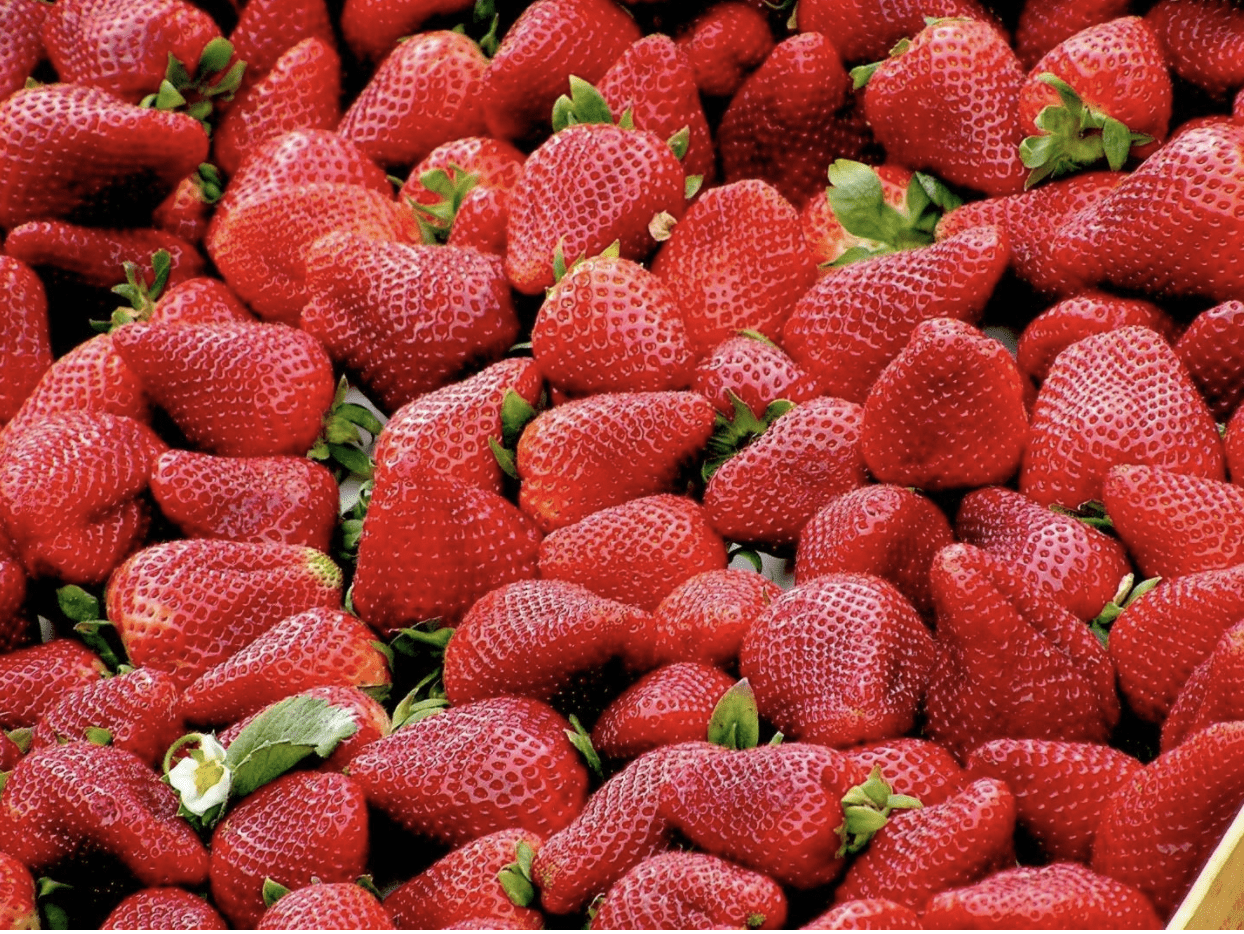
It shouldn’t take too much convincing to eat strawberries. After all, they’re already a sweet and tasty treat. In addition to tasting great, they’re packed with antioxidants, Vitamin C and flavonoids.
So they can help to fight inflammation, aid in collagen synthesis, and combat skin aging.
Each cup of strawberries provides 108% of your daily value of Vitamin C.
In terms of antioxidants, they carry an ORAC score of 4302.
Foods Rich in Carotenoids | Beta Carotene
Tomatoes
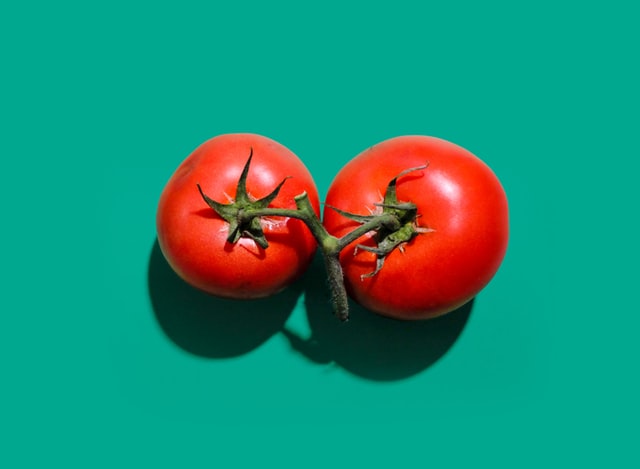
While they might not be as rich in Vitamin C as the previous entries, tomatoes are still nutrient powerhouses.
Each medium-sized tomato provides 20 mg of Vitamin C.
They also offer lutein, beta carotene, and lycopene, three very important antioxidants that help with healthy skin maintenance along with healthy vision. Carotenoids like beta carotene help keep your skin healthy by acting as a natural sunblock.
Best of all, the nutrients in tomatoes don't break down much with cooking. The only downside is pre-packaged products with tomatoes like tomato sauce, ketchup and salsa are often high in sugar.
Red and Yellow Bell Peppers
If you think you don’t like bell peppers, try the red and yellow varieties. Green bell peppers are the most common but as you might already know, the green color is from being picked before they’re ripe resulting in a more bitter taste.
When it comes to skin health, each red bell pepper has 152 mg of Vitamin C while a yellow one has around 139 mg. Like tomatoes, they’re also rich in beta carotene, which the body converts in Vitamin A and uses for skin health and wound healing. Vitamin A can also help with sebum regulation and plays a part in mitigating certain skin conditions like acne.
Sweet Potatoes
A sweeter way to get beta carotene and as a result, Vitamin A is from sweet potatoes. Each 100 grams of this starchy sweet vegetable provides 22.6 mg of Beta Carotene and 14,187 IU of Vitamin A (40% of your daily value alone). They’re also a source of magnesium which aids in heart health, sleep and bone health.
Carrots
As with Bell Peppers, people often get a negative impression of carrots early on but they’re incredibly versatile. You can have them fresh with ranch dip, glazed and roasted, pureed, made into a cake and many other ways.
Healthwise, 100 grams of cooked carrots provides 8,279 micrograms of beta carotene and 16,706 IU of Vitamin A.
Cruciferous Vegetables
Broccoli, Cabbage, Bok Choy etc
Another source of frustration on children’s dinner plates is broccoli but you’ll need to get your fill in order to maintain a youthful glow. Broccoli has important nutrients for skin health like Vitamin A, Vitamin C and Zinc.
Additionally, it has a sulforaphane which provides additional skin protection with some data to suggest it might also have anti-cancer properties. Sulforaphane helps protect your skin in two ways. In laboratory analysis, sulforaphane reduced the number of skin cells UV light killed by as much as 29%, with protection lasting up to 48 hours. Initial data suggest that sulforaphane might also help to protect existing collagen cells and have anti-arthritis effects.
Foods Rich in Antioxidant Polyphenols
Soy
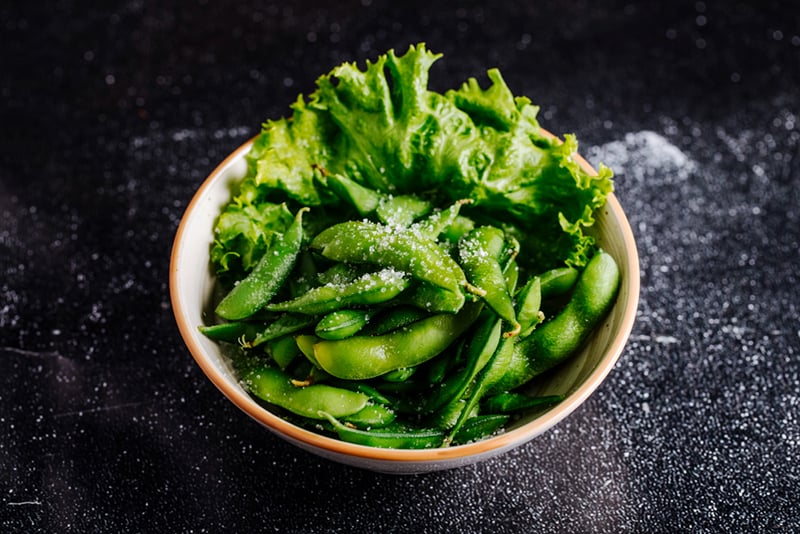
As with carrots, people narrowly view soy as just being used for tofu or soy milk but it has many more diverse uses. Edamame, miso soup, and tempeh are also soy-based foods that present soy in vastly different ways.
Soy is known primarily for being a rich source of plant proteins but it’s also packed with beneficial skin health-compounds known as isoflavones which are a type of polyphenol.
One caveat to this one is that much of the data on isoflavones improving skin health and appearance is about middle-aged and post-menopausal women. Among the individuals who have been studied though, isoflavones helped to reduce wrinkles, and improved elasticity.
Dark Chocolate
We probably don’t have to do much convincing for you to eat chocolate. To reap the skin health benefits of dark chocolate, aim for 70% or higher cocoa content. Cocoa itself offers high levels of antioxidant flavonoids which can combat the effect of Senescence cells. The accumulation of these cells leads to susceptibility to irritation, delayed wound healing, and increased cancer susceptibility.
Green Tea
You may have noticed in passing that green tea is increasingly showing up in cosmetics. The reason for this is that they’re rich in yet another class of antioxidant polyphenols called catechins which also protect against UV damage.
A 12-week study following 60 women found that drinking green tea daily could reduce redness from sun exposure by up to 25%.
The women in the study also experienced improved moisture, thickness, and elasticity of their skin.
Red Grapes
Red grapes are famous for their resveratrol, an antioxidant compound cited as being responsible for the French Paradox and a number of other potential anti-aging benefits.
In vivo test tube studies, resveratrol was able to slow the production of free radicals that cause skin-damaging aging effects.
Foods to Avoid for Glowing Skin
With all of these excellent foods that can help your skin glow, you might ask whether there are any foods that you should avoid. And there are at least a few types of skin-damaging inflammatory foods you’ll want to limit.
- Fried foods
- Fatty cuts of red meat
- Processed meats
- High-sugar
- Highly-processed and ultra-processed foods
Bottom Line
Three of the major sources of skin damage are inflammation, UV damage, and the body’s diminished ability to produce collagen as you age. So loading up your plate with foods rich in vitamins, Omega-3, collagen, and polyphenols can help your skin maintain its youthful glow.
This article is provided for informational purposes only and is not intended to be used as medical advice. If you have immediate concerns about your health, please seek the help of your physician.
*These statements have not been evaluated by the Food and Drug Administration. This product is not intended to diagnose, treat, cure or prevent disease.
© 2023 Best in Nature All rights reserved




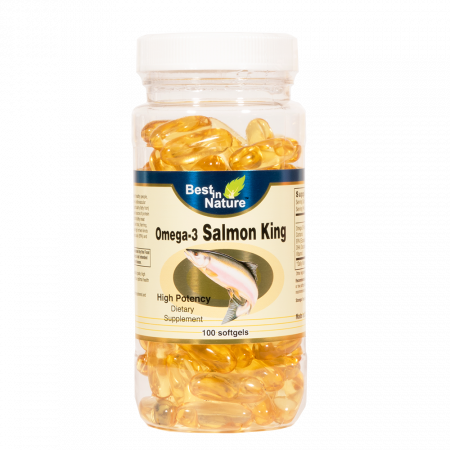
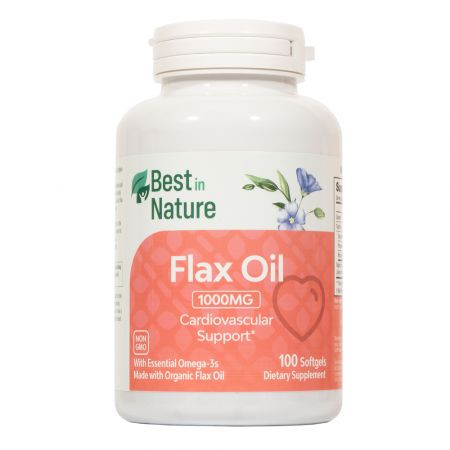
Validate your login
Sign In
Create New Account